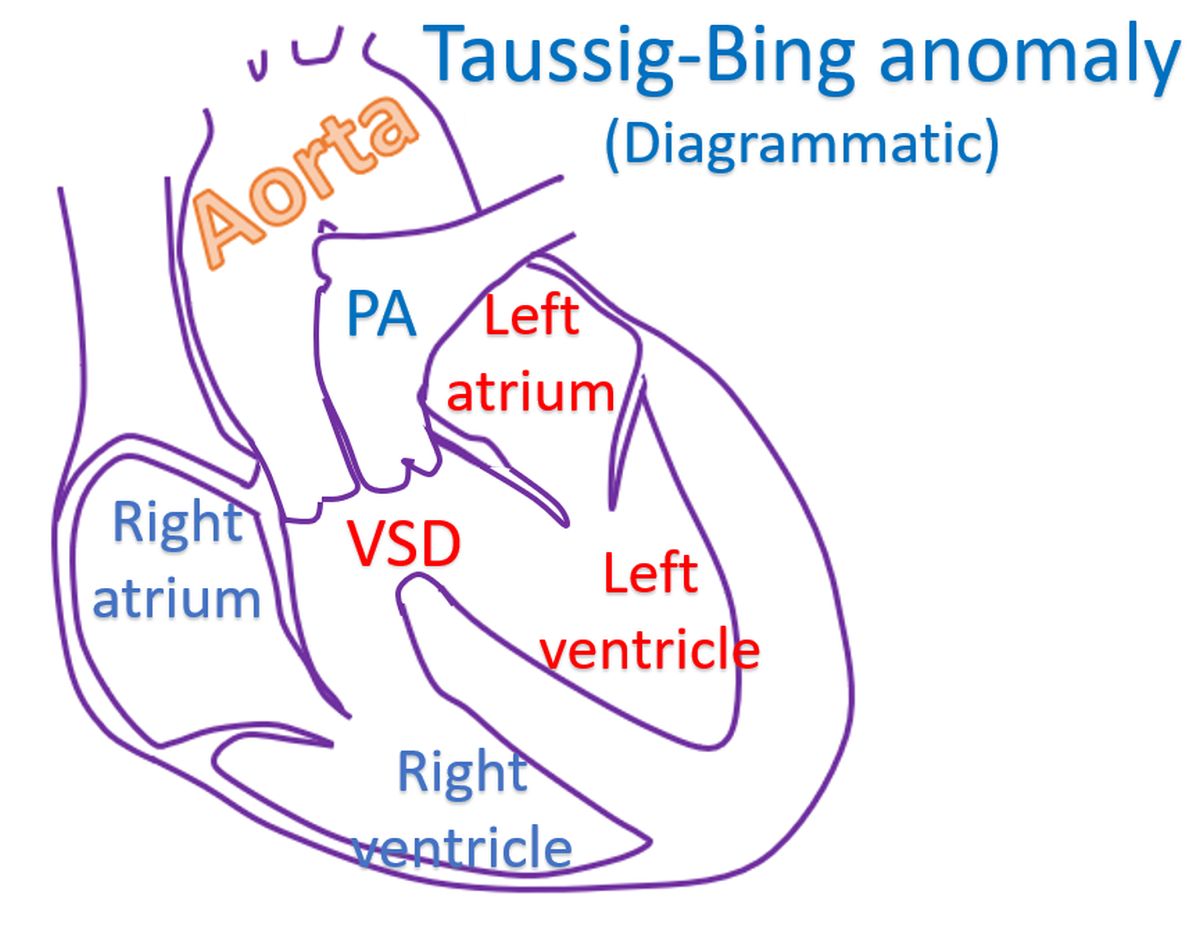Taussig Bing anomaly
What is Taussig Bing anomaly?
Taussig Bing anomaly is double outlet right ventricle (DORV) with subpulmonic ventricular septal defect (VSD) and high pulmonary blood flow with pulmonary hypertension. Hence it is a TGA like physiology. There is a transposition of the aorta to the right ventricle and malposition of the pulmonary artery. It was described by Helen B Taussig and Richard J Bing in 1949.

One strategy for surgical correction is arterial switch plus closure of ventricular septal defect. Massimo Griselli et al operated on 33 patients, of which 25 underwent single stage correction [1]. There were three early and one late death. Two early and four late reoperations were needed.
Great artery relationship was anteroposterior in 19 cases and side by side in 14 cases. While doing an arterial switch, transposing the coronary arteries without tension or kinking is very important. M H Yacoub and R Radley-Smith have classified the coronary anatomy into 5 types in transposition of great arteries [2]. Same can be applied in the setting of Taussig Bing anomaly when an arterial switch operation is planned. The types are types A to E.
References
- Massimo Griselli, Simon P McGuirk, Chung-Sen Ko, Andrew J B Clarke, David J Barron, William J Brawn. Arterial Switch Operation in Patients With Taussig-Bing Anomaly–Influence of Staged Repair and Coronary Anatomy on Outcome. Eur J Cardiothorac Surg. 2007 Feb;31(2):229-35.
- M H Yacoub, R Radley-Smith. Anatomy of the Coronary Arteries in Transposition of the Great Arteries and Methods for Their Transfer in Anatomical Correction. Thorax. 1978 Aug;33(4):418-24.


